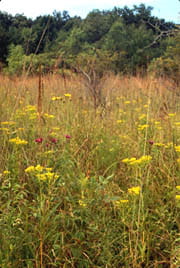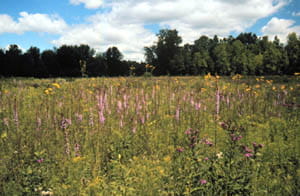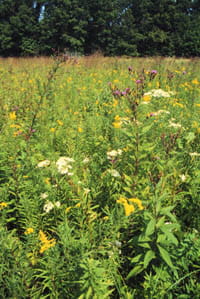The web Browser you are currently using is unsupported, and some features of this site may not work as intended. Please update to a modern browser such as Chrome, Firefox or Edge to experience all features Michigan.gov has to offer.
Algonac Prairie and Savanna
Recognition: Legally Dedicated, Natural Area by Natural Resources Commission Resolution
Size: 1244 acres
Location: Within Algonac State Park in St. Clair County, 12 miles south of St. Clair
Management: Algonac State Park
Activities: Wildflower viewing, hiking, bird watching, outdoor education, hunting, fishing
Importance: This natural area was dedicated to protect two of the rarest natural communities found in Michigan: lakeplain prairies and savannas (also known as oak openings). Prairies are areas of flat or hilly land covered chiefly by tall grasses and wildflowers, while savannas are areas of widely spaced trees with grasses, wildflowers and shrubs growing underneath. Lakeplain prairies and savannas are those that grow in the clay soils that were once lake bottoms or "lakeplains" of large lakes that covered much of southeastern Michigan, which were themselves created by the meltwater of a great glacier.
Prior to European settlement, lakeplain prairies and oak openings spanned across 600,000 acres of southeast Michigan's landscape. Today, only patches of these communities remain, totaling roughly 500 acres, and over 120 acres of that are at Algonac. This decrease is mainly due to human influence: fire suppression programs, changes in hydrologic processes and conversion of land to farmland or other development. Through restoration programs at Algonac and other sites, we are beginning to see a slight increase in the number and quality of these remaining patches.
In North America, prairies have more different kinds of plants and animals than any of the other terrestrial ecosystems, even more than forests. At Algonac, over 550 different kinds of plants have been counted, including some of the more common prairie grasses and wildflowers, such as: big bluestem, little bluestem, Indian grass, switch grass and blazing star. Animals associated with the prairie and savanna communities include grassland birds, deer and many insects.


